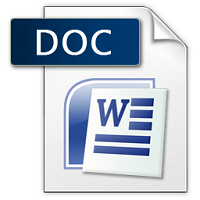₹198.00
Scroll down for Match your questions with Sample
Note- Students need to make Changes before uploading for Avoid similarity issue in turnitin.
Another Option
UNIQUE ASSIGNMENT
0-20% Similarity in turnitin
Price is 700 per assignment
Unique assignment buy via WhatsApp 8755555879
Description
| SESSION | AUG-SEP’23 | ||
| PROGRAM | MASTER OF BUSINESS ADMINISTRATION (MBA) | ||
| SEMESTER | IV | ||
| COURSE CODE & NAME | DFIN404 – INSURANCE | AND | RISK |
| MANAGEMENT | |||
Assignment Set – 1
- “Insurance is one of the most important sectors of the economy.” Explain the statement mentioning the significance of the Insurance Sector.
Ans 1.
The Significance of the Insurance Sector in the Economy
The insurance sector is undeniably one of the most critical and influential components of any economy. Its significance cannot be overstated, as it plays a multifaceted role in safeguarding individuals, businesses, and the broader economic infrastructure. This sector provides a safety net that helps mitigate the financial impact of unforeseen events and promotes economic stability. In this essay, we
Its Half solved only
Buy Complete from our online store
https://smuassignment.in/online-store/
MUJ Fully solved assignment available for session SEPT 2023.
Lowest price guarantee with quality.
Charges INR 198 only per assignment. For more information you can get via mail or Whats app also
Mail id is aapkieducation@gmail.com
Our website www.smuassignment.in
After mail, we will reply you instant or maximum
1 hour.
Otherwise you can also contact on our
whatsapp no 8791490301.
- Explain the four main Insurance Riders.
Ans 2.
Insurance riders are supplementary provisions that can be added to an insurance policy to enhance its coverage and customize it to the policyholder’s specific needs. These riders provide additional benefits beyond the standard coverage of the policy. In this discussion, we will delve into the four main insurance riders and explore how they can be used to tailor insurance policies to
- Write a short note on the role of Rural Insurance in Making People’s lives better in rural India.
Ans 3.
Rural India, with its vast and diverse population, faces numerous challenges in terms of economic stability and social well-being. One crucial aspect that plays a pivotal role in improving the lives of people in rural India is rural insurance. This financial instrument, designed specifically for rural areas, offers a safety net to individuals and communities, fostering economic growth, social security, and overall prosperity. In this note, we will delve into the multifaceted role of
Assignment Set – 2
- What is Motor Insurance and explain the Types of Motor Insurance Policies.
Ans 4.
Motor insurance, commonly known as auto or car insurance, is a crucial financial safeguard for vehicle owners. It provides protection against unexpected expenses that can arise from accidents, theft, or damage to your vehicle. In this comprehensive guide, we will delve into the world of motor insurance, exploring its significance and the various types of motor insurance policies available.
The Significance of Motor
- Explain the product development process in detail for the Insurance Sector in India.
Ans 5.
Product Development Process in the Insurance Sector in India
Product development in the insurance sector is a critical process that involves creating insurance policies that cater to the diverse needs of customers while ensuring profitability and compliance with regulatory requirements. The product development process in the Indian insurance sector is a complex and systematic one, involving several key stages.
- Market Research and
- Write a detailed note on Insurance Underwriting explaining the following:
- What is Insurance Underwriting?
- What is the need for insurance Underwriting?
- Types of underwriters.
Ans 6.
Insurance underwriting
Insurance underwriting is a critical process within the insurance industry that plays a pivotal role in assessing and managing risk. It involves a detailed evaluation of insurance applications, determining the level of risk associated with insuring a particular individual or entity, and setting appropriate premium rates. In this comprehensive note, we will delve into the intricacies of


